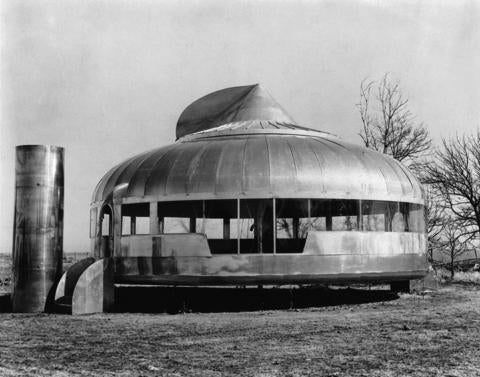
Richard Buckminster Fuller, Dymaxion House, conceived and designed in the late 1920’s, built in 1945
My dream collection would start with an attempt at daily life inside of Buckminster Fuller’s Dymaxion House. Conceived in the 20s, completed in the 30s, and redesigned in the 40s, it is full of boundless optimism in the future, in science and technology, and in our ability as humans to solve all of the social and environmental challenges that Fuller saw on the horizon. It was designed to efficiently accommodate minimum daily human needs in a prefabricated compact enclosure, elevated on a central support that housed utility lines and a duct leading to a roof-top, convection-driven ventilator. And because Fuller was obsessed with doing the most with the least, his dream house weighed about 3,000 pounds compared to the 150-ton average weight of a single-family home at the time. Though this industrialized, machine-made dwelling – made to be plopped anywhere on the planet without regard for regional specificity or human eccentricity – is diametrically opposed to my life today in hand-built hippie cabins on a former Northern California commune, I still find my self deeply drawn to its utopian impulse. The nagging question of “how to live?” drove all of Fuller’s work, and brings me to this land today. I imagine the shiny, stainless, UFO-like Dymaxion House plopped down here at Salmon Creek Farm, in the center of the apple orchard. It would be a vivid contrast with the ramshackle (though charming) dream-house cabins built by young hippie hands. It would be evidence of historic visions of an unrealized, brighter future. And it would be a reminder that our utopias are personal and always changing.
